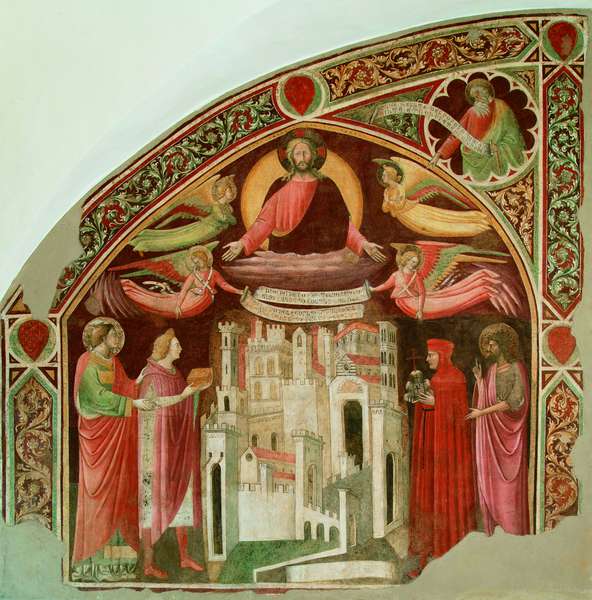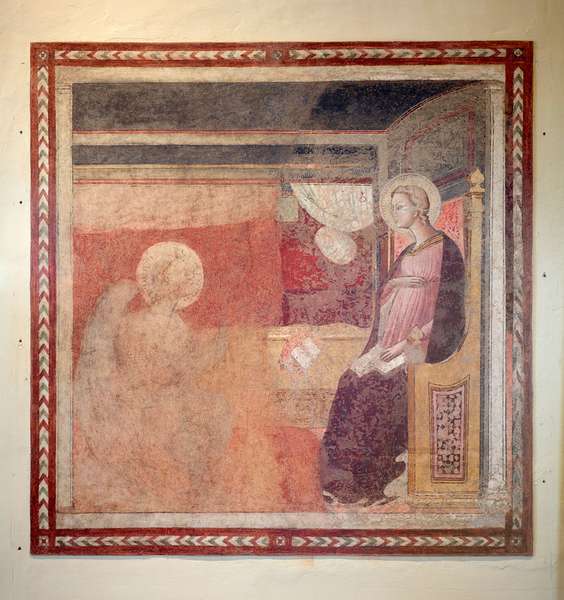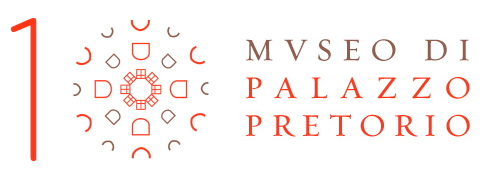Interiors

Pietro and Antonio di Miniato, The Saints Stephen and John the Baptist show to Jesus Christ the city of Prato, detached fresco ground floor, Palazzo Pretorio

Historical statements of its various functions, such as fine frescoes, coats of arms and commemorative stones, enrich the rooms of the Palazzo Pretorio. The halls of the first and the second floor are enchanting, while the third floor has a wonderful view overlooking the town.
Both on the internal and external walls of the Pretorio, one can admire the coats of arms depicted through the ages of the podestà, foreigner magistrates called to administer the City whose term of office lasted about six months.
On the ground floor there are two wide halls: one built in the 14th Century, with a groin vault abutted upon the main column; one built in the 16th Century, with the vaults decorated in a neo-Gothic style in the early 20th Century. There are two valuable frescoes: the first one was probably painted in 1307 by Bettino Corsino and depicts the Madonna with Child and the Saints John the Evangelist and Stephen, while the second one, painted in 1415 by Pietro and Antonio di Miniato, depicts Saints Stephen and John the Baptist presenting to Christ the City of Prato. This fresco offers a view of Prato with its historical buildings, such as the Palazzo Pretorio and the Palazzo Datini.
At the first floor there is a wide 14th Century hall, with a considerable number of coats of arms and an original ceiling constructed of painted wooden joists.
A statue of a Warrior with Shield from the 15th Century prevails over the room, in which a headless statue belonging to the Donatello school and a tondo of the Della Robbia school, bearing the Florentine People’s Coat of Arms, are also exhibited. A noteworthy fragment of Saint Frances, probably belonging to an early 14th Century Majesty, and a fine Annunciation made by Antonio da Miniato in the early 15th century, stand out among the pictorial decorations.
A noticeable fresco on the Crucifixion and a washbowl of stone of the 15th Century are displayed in the following rooms.
Walking up a stairway of the 16th Century and through the mezzanine, where one can admire a fresco credited to Tommaso di Piero, Christ in the Sepulcher , one reaches the second floor.
The wide hall has the original ceiling constructed of painted wooden joists and various coats of arms as on the first floor. There is also a 15th Century washbowl and a large fireplace. Of especial note are the three-lobed tabernacles, frescoed at the request of Podestà Alberto Salviati in 1382 by the Florentine painter Francesco di Michele with a Madonna with Child, the donor and the Saints Frances and Catherine from Alessandria.
There are many others valuable pictorial decorations, such as a Saint Christopher from the late 14th Century, a Madonna with Child and the angels from the middle 14th Century and a Saint Nicholas from the early 15th Century.

